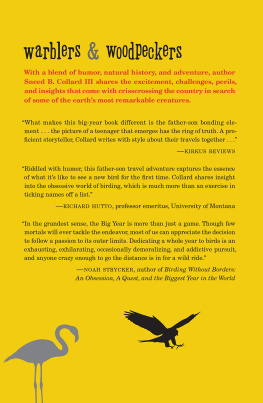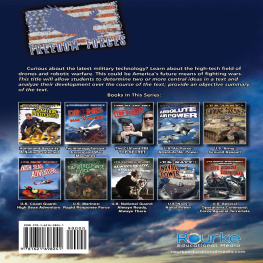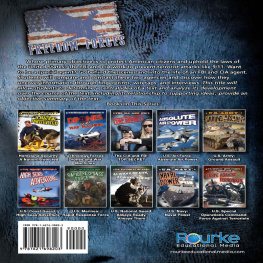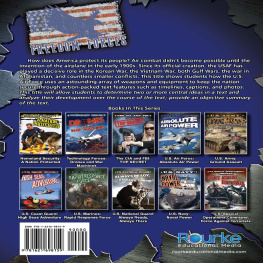B is for Big Sky Country
A Montana Alphabet

Written by Sneed B. Collard III and Illustrated by Joanna Yardley

For the children of Montana,
May your eyes always shine as bright as our big blue sky.
SNEED
For my native MontananMax.
JOANNA


Photo of Charles M. Russell at his studio easel, courtesy of the C. M. Russell Museum, Great Falls, Montana. With thanks to Kim Smith.
Additional thanks to Don Spritzer for his careful input and ideas; to my information experts Debbie Cheeks, Jerry Hanson, Jeff Helmer, Ladd Knotek, Robb Leary, Peter Lesica, Gina Loss, Murphy McMahon, Paula Nelson, Marijka Wessner, Warren White, and the helpful people at |the Charles Russell Museum and Helena Chamber of Commerce; and last, to my enthusiastic Writers Grouppoets one and all!
Sneed B. Collard, III
Thanks to: The Myrna Loy Center, Great Falls, Montana; The Montana Historical Society, Helena, Montana; The Carter County Museum, Ekalaka, Montana.
Joanna Yardley
A
Gold and silver brought the first waves of white settlers to Montana. Copper kept them here. After the invention of the telephone and the electric lightbulb, demand for copper wiring soared. By the 1880s, the Anaconda Copper Company was the largest producer of copper in the world. Copper ore was mined in Butte, Montana and sent by rail to a smelter in Anaconda. Workers used two and a half million special large tile bricks to build the smelters giant chimney. Today, the smelter is gone, but the 585-foot-high chimney still towers over the landscape.
A is for Anaconda, where copper once was king.
The metal that men made here, helped our telephones ring.

B
When you mention Montana, most people think Big Sky Country. And its truethe sky here somehow seems bigger, bluer, and more spectacular than in any other state. Why? Maybe its because the earth curves more here in the northern part of the United States. More likely, its simply because our sky stretches over such an abundance of beauty.
B, though, also stands for Montanas state flower, the bitterroot, and one of our most famous animals, the bison. If you want to see plenty of bison, visit the National Bison Range near Moiese and Ravalli. Established in 1908, this National Wildlife Refuge is home to elk, deer, pronghorn, black bear, and of course, bison or buffalothe same animals that used to darken the plains in every direction.
Big Sky Country begins with Ba nickname tried and true.
Gaze above you to understand, how a sky can be so grand.
C
Montana doesnt have just one official state fish. It has twothe West Slope Cutthroat Trout and the Yellowstone Cutthroat Trout. Cutthroat trout are known for hunting downstream in rivers and lakes and returning to their smaller birth streams to spawn. The West Slope Cutthroat played a special role in Montana history. When Lewis and Clark were passing through Great Falls in 1805, they became the first white men to catch and describe a West Slope Cutthroat. Today, the scientific name of the fishOncorhynhcus clarki lewisihonors these two great explorers (also see P). Unfortunately, the past two centuries have not been kind to either of our state fish. Cutthroat numbers have plummeted because of water pollution, dams along Montanas rivers, and the introduction of non-native fish species. State agencies and conservation groups are working together to try to save these beautiful, fishy parts of our states heritage.
C is for Cutthroat Trout, a fishermans true dream.
It hunts in downstream waters, and lays its eggs upstream.

D
Ranchers and scientists have discovered many dinosaur skeletons in Montanaincluding numerous Tyrannosaurus rexes. In a place called Egg Mountain near Choteau, paleontologist Jack Horner discovered the first ancient dinosaur eggs and nests ever found. Some of these nests belonged to Maiasaura peeblesorum, a kind of duck-billed dinosaur. This dinosaur nested in large colonies and probably traveled in herds. In 1985, after receiving a petition signed by 8,574 school students, the Montana State Legislature proclaimed Maiasaura peeblesorum our official state fossil.
D is for Duck-billed Dinosaurs, that traveled in large herds.
They had their young by laying eggs, just like our feathered birds.

E
The town of Ekalaka began when the wagon team of Claude Carter, a buffalo hunter, got tired of pulling its wagon full of logs. Carter had intended to build a saloon in gold country farther to the west. But when his horse team bogged down, he decided to use the logs to build a saloon right where he stood. Cowboys, then homesteaders, came to his establishment. The first homesteader was a man named David Russell, who married a niece of the Ogala Sioux chief, Red Cloud. Her name was Ijkalaka and after she and her husband settled in the area, the local postmaster named the town after her. Today, tourists visit Ekalaka for its authentic Western main street and the beautiful limestone cliffs and outcrops close by.
E is for Ekalakasay that real fast!
Heres a place you should stop and see, for beauty, stories, and history.

F
When visitors first arrive in Montana, they are often impressed by how big everything is! Indeed, Montana is Americas fourth largest state, enclosing more than 147,000 square milesthe size of New York, Pennsylvania, Massachusetts, Connecticut, Maine, Vermont, and Washington, D.C. put together. Montana is also home to Flathead Lake. At 28 miles long and 7 to 8 miles wide, it is the largest natural freshwater lake in the West.
F is for big Flathead Lake, and because we are Fourth largest state.
Look around, its no surprise, everything heres been supersized.

G
Over millions of years, the upheaval of the Earth and patient scraping of glaciers created the magnificent mountains and valleys of Glacier National Park. Long before white men found it, Glacier served as a spectacular hunting ground for Indians and a home for grizzlies, wolves, bighorn sheep, and mountain goats. In 1910, the U.S. Congress officially created Glacier National Park. In 1932, workers completed the world-famous Going-to-the-Sun Road. The road twists and turns through the parks glacier-carved valleys and carries visitors up past alpine meadows full of glacier lilies, shooting stars, and bear grass. It crosses the Continental Divide at Logan Pass, 6,680 feet above sea leveland as close to the sun as most visitors ever want to get!


















